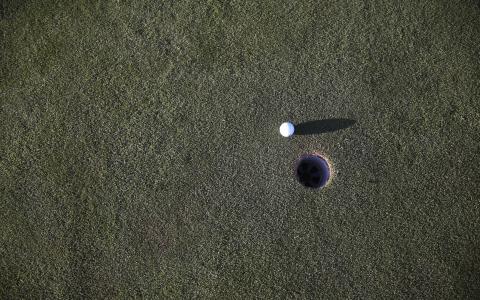
(Gold Shake) Harder, better, faster, stronger.
Professional golfers are hitting the ball further and swinging the club with more force than ever before.
Advancements in club and ball technology, along with improved strength and conditioning training, have helped players smash driving distance records, forcing designers, particularly in the United States, to lengthen their courses.
Whether the arms race is good for the sport is up for debate. Another important discussion, however, is whether it’s good for the players.
A study published in the Journal of Neurosurgery: Spine in February 2019 claimed the modern ‘X-factor’ swing – designed to increase distance – can cause back injuries.
The X-factor is favoured by most professionals, including 14-time major winner Tiger Woods, and Northern Irish sensation, Rory McIlroy. The extra distance is generated from rotating the shoulders further in relation to the hips, creating more wound-up potential energy, which translates to a more explosive downswing and increased length off the tee.
According to the study, however, the extra twist puts strain on the lumbar spine, while the powerful downswing causes a ‘crunch’ that damages the disc and facet joints.
Woods and McIlroy – renowned for their picture-perfect X-factor swings and incredible distance off the tee – have both struggled with back injuries in recent years.
Back spasms also forced Cameron Champ – the longest hitter on the PGA Tour who has set club head speed records this season – to pull out of the Players Championship in March.
But Shane Lawlor, a chiropractor who since 2009 has worked with PGA and European Tour players such as Padraig Harrington, Henrik Stenson and Shane Lowry, doesn’t believe that the X-factor swing itself is to blame.
“I'm not against the X-factor, but it needs to be worked between the strength and conditioning coach and a medical practitioner,” he says.
“If the player physically can't get there then you have a problem.”
It is young players, Lawlor says, who are most at risk.
“The trend now is that if you're 18 or 19 years of age and you can't hit it over 300 yards you're at a severe disadvantage,” he says.
“I would be interested in seeing what will happen in the next five to 10 years.
“If they're not physically ready, if they're swinging much harder with such high clubhead speed, I don't know if their careers will be as long.
“The analogy I would use for a young kid is if you put a Ferrari engine in a Micra, it's not going to work very well.”
Strength and conditioning training often gets a bad rap in golf.
Pundits like Brandel Chamblee and Johnny Miller have criticized both McIlroy and Woods for putting in hours at the gym, suggesting the pursuit of physical perfection has hurt both players’ ability to win majors.
But Lawlor argues that there is no way that a professional player’s body can accommodate the kind of swing needed to be competitive in the modern game without spending time building strength in the gym.
“The discs are going to get overloaded, it's hard to stabilise the spine through rotation, and if you do it to one side it will cause disc bulges and pain,” he says.
“The right strength and conditioning training is an absolute necessity. You need to make sure you are mobile and stable, and your body is able to withstand those forces.
“You don’t need golfers to be massive powerlifters, but they need the ability to move their joints at speed.”
Most players recognise this. Whereas trips to the chiropractor in the past would primarily be for dealing with niggles or rehabbing serious injuries, Lawlor is now visited in a performance capacity by pros looking to gain an edge over their competitors.
Seeing them more regularly allows him to ensure that their bodies are capable of taking on any swing changes, and to build regimes – along with their fitness coaches – around their own specific needs.
Some pros like to rest on the day before a tournament, while others prefer to still be sore from a gym session when they step on to the tee.
Neither is a problem, Lawlor says, providing they take care of themselves away from the course and don’t overload with training (which is the mistake Woods made early on in his career).
Long-haul flights, lazy rest days playing video games or even the hotel pillow can cause stiffness in the back that could lead to injuries.
It’s plenty to monitor, but Lawlor says there’s no quick fix when it comes to getting players into the right shape to play the game at a high level for a long time.
“The good players see that it's a process,” he says. “It's not going to take six months.
“It's the small incremental stuff that won't help if you do it for one season. It's about doing it over a career.”
Harrington, 47, is a good example of a player who has taken his conditioning seriously and will now benefit.
“Padraig is fitter now than when he was at 20,” says Lawlor. "He's a totally different animal.
“I think he's going to do really well on the Champions Tour. That's the change we'll see. With these guys that are now fitter at 49 or 50, it's going to be really competitive.”
Golf will always be hard on the back. The repetitive, one-sided nature of the swing inevitably puts more pressure on the spine than in most other sports, while the hours of practice required to be a professional means there is always the danger of overload.
But while the speed of the modern swing could, as Lawlor suggests, lead to back problems further along in younger players’ careers, it is strength and conditioning work that reduces the chances of those issues arising.
So even though time in the gym remains much-maligned by members of golf’s old guard, it could be the reason McIlroy and other top players are still competing for majors in 10 years’ time.



